Comprehensive assessment of a nationwide simulation-based course for artificial life support
- PMID: 34618829
- PMCID: PMC8496826
- DOI: 10.1371/journal.pone.0257162
Comprehensive assessment of a nationwide simulation-based course for artificial life support
Erratum in
-
Correction: Comprehensive assessment of a nationwide simulation-based course for artificial life support.PLoS One. 2025 Jan 23;20(1):e0318273. doi: 10.1371/journal.pone.0318273. eCollection 2025. PLoS One. 2025. PMID: 39847568 Free PMC article.
Abstract
Background: Successful implementation of medical technologies applied in life-threatening conditions, including extracorporeal membrane oxygenation (ECMO) requires appropriate preparation and training of medical personnel. The pandemic has accelerated the creation of new ECMO centers and has highlighted continuous training in adapting to new pandemic standards. To reach high standards of patients' care, we created the first of its kind, National Education Centre for Artificial Life Support (NEC-ALS) in 40 million inhabitants' country in the Central and Eastern Europe (CEE). The role of the Center is to test and promote the novel or commonly used procedures as well as to develop staff skills on management of patients needing ECMO.
Method: In 2020, nine approved and endorsed by ELSO courses of "Artificial Life Support with ECMO" were organized. Physicians participated in the three-day high-fidelity simulation-based training that was adapted to abide by the social distancing norms of the COVID-19 pandemic. Knowledge as well as crucial cognitive, behavioral and technical aspects (on a 5-point Likert scale) of management on ECMO were assessed before and after course completion. Moreover, the results of training in mechanical chest compression were also evaluated.
Results: There were 115 participants (60% men) predominantly in the age of 30-40 years. Majority of them (63%) were anesthesiologists or intensivists with more than 5-year clinical experience, but 54% had no previous ECMO experience. There was significant improvement after the course in all cognitive, behavioral, and technical self-assessments. Among aspects of management with ECMO that all increased significantly following the course, the most pronounced was related to the technical one (from approximately 1.0 to more 4.0 points). Knowledge scores significantly increased post-course from 11.4 ± SD to 13 ± SD (out of 15 points). The quality of manual chest compression relatively poor before course improved significantly after training.
Conclusions: Our course confirmed that simulation as an educational approach is invaluable not only in training and testing of novel or commonly used procedures, skills upgrading, but also in practicing very rare cases. The implementation of the education program during COVID-19 pandemic may be helpful in founding specialized Advanced Life Support centers and teams including mobile ones. The dedicated R&D Innovation Ecosystem established in the "ECMO for Greater Poland" program, with developed National Education Center can play a crucial role in the knowledge and know-how transfer but future research is needed.
Conflict of interest statement
The authors have declared that no competing interests exist.
Figures
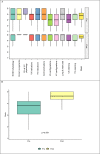
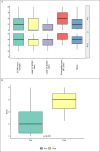
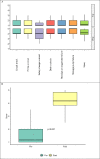

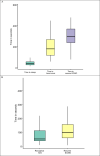
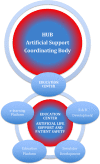
References
-
- www.ecmo.pl Accessed 5 March 2021
Publication types
MeSH terms
LinkOut - more resources
Full Text Sources
Medical
Miscellaneous

